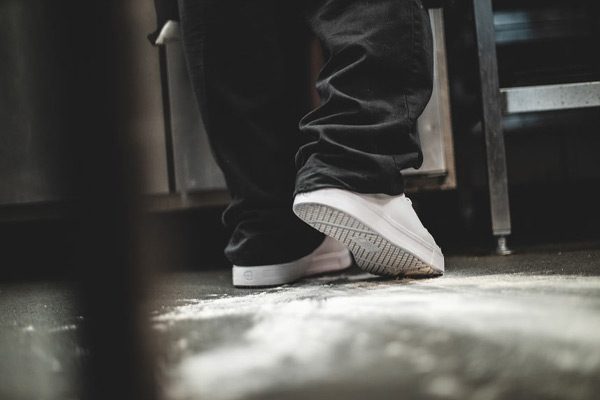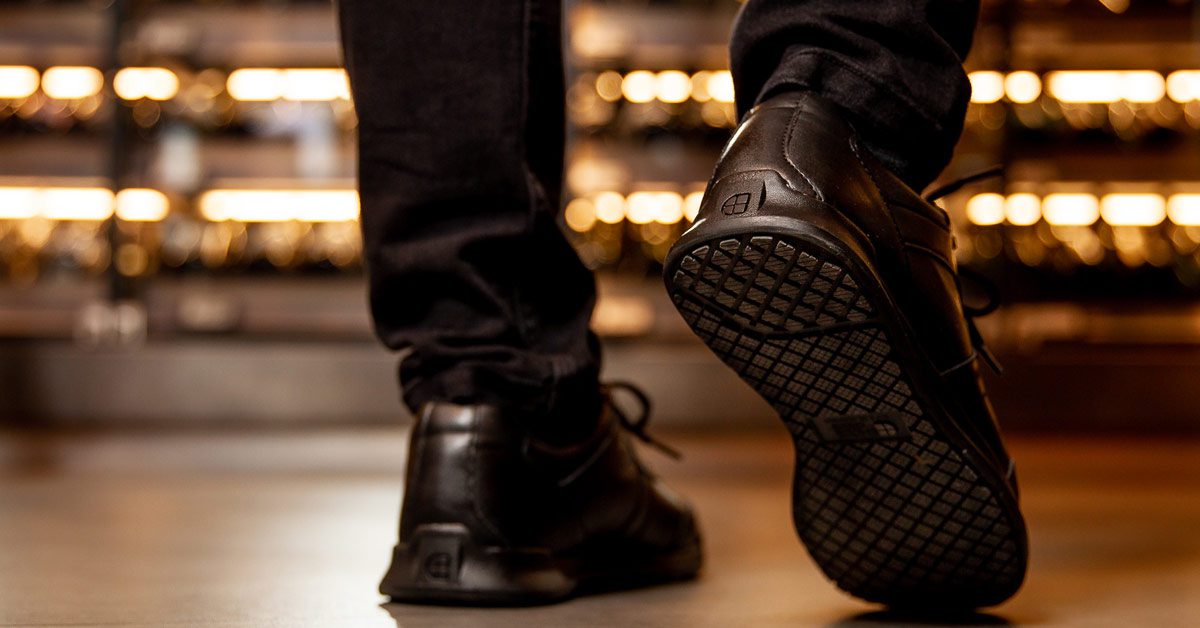Restaurants are usually synonymous with cosy, inviting places to enjoy a meal, a nice beverage, and good conversation –-from a customer’s perspective. Hospitality workers tend to view restaurants slightly differently and can spot examples of physical hazards that may be unconsciously ignored by clientele. Employees, whether in the front rooms or back in the kitchen, are conscious of the dangers they potentially face and do their very best to maintain awareness throughout their entire shifts.
In the past couple of years due to uncertain times, the closing of hospitality venues followed by the reopening of said locations, employee health and well-being have been at the forefront of many managers’ minds. According to the HSE, around 473,000 people in the labour force suffer from a work-related musculoskeletal disorder. And as the concern for employees’ health becomes more of a priority, the awareness and acknowledgment of the conditions and hazards of workplaces have increased greatly.
Keep reading to learn more about the 5 main examples of physical hazards that employees are exposed to in a restaurant and how Shoes For Crews can support your team
1. Slips, trips and falls
The number one most common physical hazard in restaurants especially is the risk of slipping, tripping and falling in some capacity. The best way to prevent such incidents is to go by the rule of thumb to clean up any spills or fallen objects immediately.
Restaurants can get crowded in the winter and early spring when temperatures are still low and the days are shorter. Make sure your staff is protected with clear, easily walkable hallways and paths and well-lit dining rooms and kitchens. At Shoes for Crews, we go the extra mile to provide hospitality workers with comfortable and supportive footwear to prevent slips and trips.
2. Ladders and step stools
Always clean wet or slippery footwear before climbing or using a ladder in the restaurant. Encourage employees who use this equipment to implement a three-point stance, keeping both feet and at least one hand on the ladder at all times. Repair any loose boards or steps or any damages to ladders or step stools before reusing. Rest this type of equipment on a slip-resistant mat or have another employee hold it while in use.
Make sure work shoes are tied tightly and no loose shoelaces are out so as to avoid getting them caught on the step or rung of a ladder.
3. Manual handling
The main aim when working to prevent manual handling injuries or accidents is to reduce or mitigate the risk factors. Overexertion or repetitive injuries may include:
- Holding an awkward back posture or stance for a period of time due to poor working heights and reaches
- Heavy or frequent lifting, pushing, pulling and carrying (ie: lifting and carrying bulk food containers, boxes or heavy equipment, among others)
- Prolonged sitting or standing (ie: hosts or hostesses whose main duties are to stand and greet patrons and work the till or hold a tablet)
4. Stairs and hallways
Ensure that obstructions in either hallways or staircases are removed immediately. Kindly remind employees to report any hazards they might notice during their shifts and place warning signs when appropriate. When carrying loads up and down stairs, employees should take extra precautions to not block their vision.
5. Improper care of footwear
To extend the life of work shoes, it is recommended that employees keep their work shoes separate from their everyday footwear. Leaving work shoes at the restaurant and wearing a different pair for the journey home will result in extending their slip-resistance capabilities. With good care, a pair of durable, supportive Shoes For Crews work shoes will last employees about eight to nine months on average.
We understand the challenges and pressures of working in the hospitality industry, especially now that Europe is settling more and more into a post-pandemic way of life. This article focuses mainly on the physical hazards employees are exposed to in a restaurant but there are other concerns at the front of hospitality managers’ minds. Some of those issues include how to prevent such hazards in restaurants and which slip-resistant shoes are the safest for a hospitality worker to wear.
Due to the high risk of slips and trips in restaurants and kitchens, it is important that your staff is equipped with comfortable and supportive footwear to help get them through even their busiest, most intense shifts. Are you interested in receiving more information or a free sample pair of work shoes to test out? Please do not hesitate to get in touch with us. We are confident we can find the best shoe styles to fit any job role at your restaurant.





